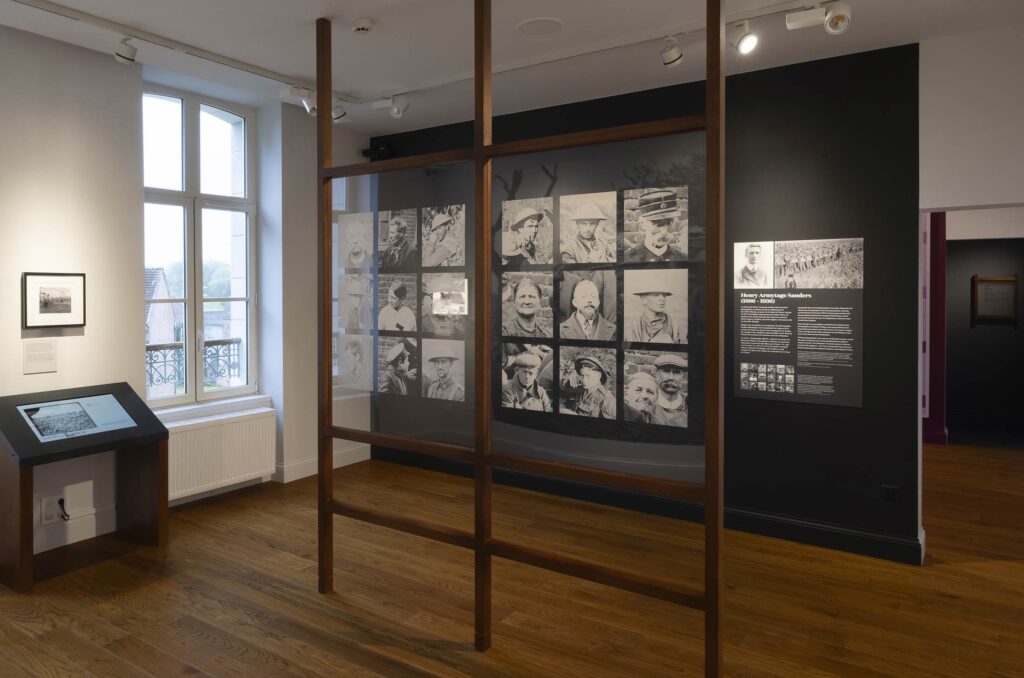Uncovering the touching stories of soldiers and Le Quesnoy locals
Researching the diaries and letters of soldiers and the people of Le Quesnoy from World War One brought Dr Nathalie Philippe to tears.
“It can be quite overwhelming, and several times I stopped doing my research because it was too much,” she says.
Dr Philippe has been an advisor to the NZ Liberation Museum – Te Arawhata in Le Quesnoy since 2019 and was instrumental in developing the French aspect of the exhibition. For the project she used the touching writings of soldiers and civilians to give a first-hand sense of what Le Quesnoy was like at the time.
“What makes the Le Quesnoy story poignant and interesting is the people – and people are at the heart of the museum too,” she says.

Originally from Paris, Dr Philippe has lived in New Zealand for 30 years and teaches French culture, history and language at the University of Waikato.
Much of her work focuses on the connection between New Zealand and France. She is currently working on a book about Le Quesnoy from both a New Zealand and French perspective. Last year she was awarded the John Dunmore medal in recognition of her contribution to the understanding of France, its people, and the French language.
During her research for Te Arawhata the writings of Alphonse Courouble, a brewer who worked and lived in Le Quesnoy, resonated most strongly with her.
“The way he writes you feel like he’s in the same room as you,” she says.
“He’s too old to fight and helps as a medic but gets separated from his wife and children because of the war.”
“He keeps a diary, which you’ve got to remember, keeping a diary was entirely illegal. So, he hides it, and he’s not supposed to be telling these stories. But for him it’s a lifeline and it’s extremely important.”
Alfonso writes to his family in a loving and genuine way, which Dr Philippe explains, makes his writing unusual for the time.
“He’s able to share his feelings on paper and he’s extremely human. It’s that humanity I really like. He thinks about his children, recalls happy events with his family, but at the same time he is describing how his brewery is slowly getting destroyed.”
In the end he loses his brewery when German soldiers commandeer the copper pipes to use them in the war effort.
“He’s just devastated. That’s one of the stories that touched me a lot. It’s heartbreaking,” she says.
When did you first hear about the Le Quesnoy story?
A very long time ago in 1997. I had just finished my studies at university in Paris and I applied for a job. It was a historian-in-residence position, and it was a joint project for the University of Waikato and the Hamilton City Council, and the aim was to develop an exhibition at the Waikato Museum.
The exhibition was to be held in 1998. So, I thought 1998, 80th anniversary of the end of the First World War. I was selected and it led to the exhibition “All Quiet on the Western Front?”. That’s when I learnt about Le Quesnoy. I was very, very surprised.
Why do you think the Le Quesnoy story is special?
It’s an enduring story given the relationship between Le Quesnoy and New Zealand. But more than that, what made the story poignant and interesting is the people. And people are at the heart of the museum too. Without people, we don’t have a story. It’s poignant to read soldiers letters, their diaries, and it is also poignant to read letters by civilians in Le Quesnoy and the surrounding areas. I also think it’s an important part of our common history to be told so the next generation know about it.
What were some of the challenges with the project?
It’s interesting because when you start a project like this, you would like to tell so many stories and involve as many voices as possible. But you can’t because you are restricted by space.
Plus, you don’t want to have visitor fatigue through telling the story.
In your work you bring together the French culture with other cultures, especially New Zealand.
I like bringing people together from these two countries and to try to find a common ground. New Zealand and France have a shared history, and the museum symbolises that. But we all need to learn more about each other and about Le Quesnoy and what happened there.
Why do you think the museum is important?
It’s a symbol for the relationship between France and New Zealand, and especially the fighting on the Western France. It’s a symbol of the relationship that French people and Kiwis have developed since the First World War.
But it’s also about the friendships that developed outside the context of war. It’s a very good way to discover new cultures and for Kiwis to get to know France more and vice versa.
What was it like to see museum finally open?
Oh gosh, I was crying. The dawn blessing was extremely emotional. When you work so hard on a project, it makes it so rewarding to see it come to fruition. But at the same time, on a personal level, it’s not just work, it’s personal as well. For me it’s about bringing two countries together – that’s really important for me.
Books by Dr Nathalie Philippe
(2023) Death among Good Men: First World War Reflections from New Zealand Major General Lindsay Inglis (Auckland (NZ): David Bateman, 2023)
(2013) with Christopher Pugsley, John Crawford & Matthias Strohn, The Great Adventure Ends: New Zealand and France on the Western Front (Christchurch (NZ): John Douglas Publishing, 2013)
(2007) Vie quotidienne en France occupée : journaux de Maurice Delmotte 1914–1918 (Paris : L’Harmattan, 2007)
(1999) Une colonie écossaise en Nouvelle-Zélande, Dunedin 1848–1878 : étude socio-historique (Villeneuve d’Asq : Presses Universitaires du Septentrion, 1999)
